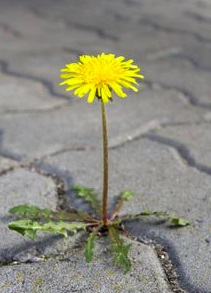
Did this ever really happen? Some say there was never even an actual person called the Buddha. And among those who accept that the Buddha really did exist, many doubt all these stories that are told about him in the holy scriptures of Buddhism. But even among those who accept the traditional stories of the life of the Buddha, many (probably most) do not accept this particular story about that time he supposedly held up a flower and didn’t say anything.
Only Zen Buddhists tell this particular story about the Buddha and Mahakasyapa. All of the various Buddhist traditions accept that Mahakasyapa was the Buddha’s own choice to be his successor after he died. But only the Zen Buddhists tell this particular story about Mahakasyapa receiving “the true dharma eye”.
But even among Zen Buddhists there are slight variations. Sometimes it is said that the Buddha “twirled” the flower when he held it up. Other versions clearly state that in addition to holding up the flower, the Buddha also blinked. There is at least one version (in a poem by Hongzhi) where the Buddha holds up the flower, twirls it, and blinks.

There is an interesting thing about the Chinese word for “blink”. It can also mean “wink”. And it turns out that a “wink” in Chinese means pretty much the same as a “wink” in any other language. According to the online Oxford English dictionary, to “wink” means to “close and open one eye quickly, typically to indicate that something is a joke or a secret or as a signal of affection or greeting.” Hmmm. “A joke or a secret or as a signal of affection.” You don’t say?
The Chinese word for “blink” is 眨眼 , which is made up of two characters. The first 眨 (zhǎ) can be used on it’s own to mean “blink”, but it is usually followed by 眼 (yǎn), which means “eye”. So 眨眼 literally means “blink eye”. Or something like that.
But it turns out that there is a different word for “wink” in Chinese that is less ambiguous. This is another two-character combination: 放電 (fàng-diàn), which literally means “to release electricity”. In fact, it not only means that literally, but it is often used with that meaning. So 放電 is also ambiguous, just in a different way.

Fortunately for the Buddha, the only people who repeat this story are Zen people. And you can never tell what Zen people are talking about any way. So his secret is safe.